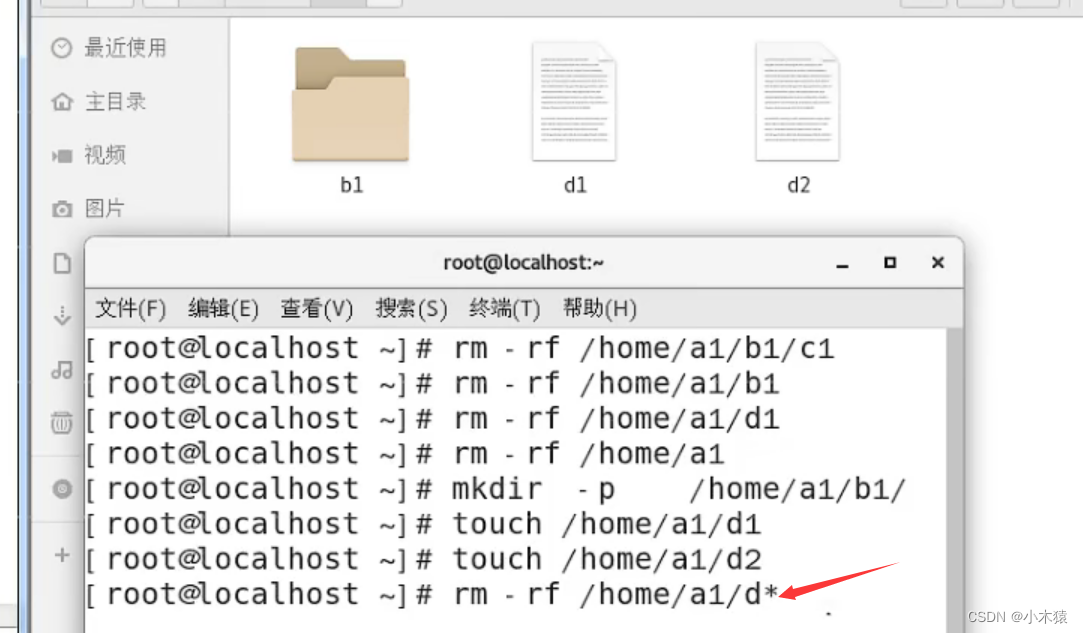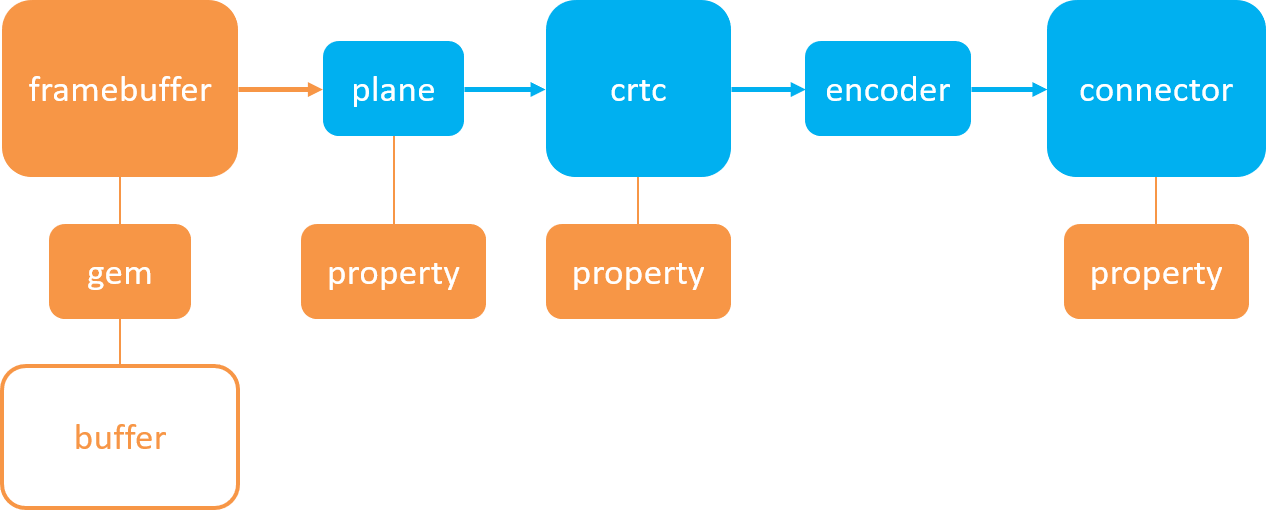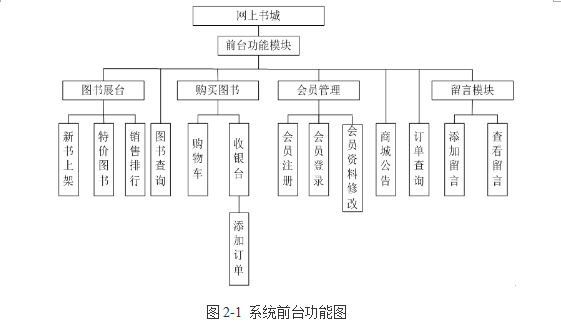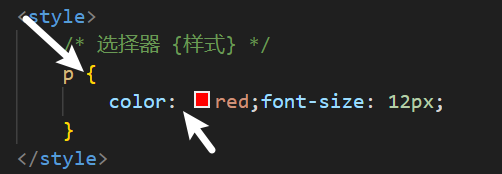1、摘要
本文主要讲解:麻雀算法SSA优化LSTM长短期记忆网络实现分类算法
主要思路:
- 准备一份分类数据,数据介绍在第二章
- 准备好麻雀算法SSA,要用随机数据跑起来
- 用lstm把分类数据跑起来
- 将lstm的超参数交给SSA去优化
- 优化完的最优参数给lstm去做最后一次训练
2、数据介绍
Cll:出料量
Lsp:量水平
Djzsp:电解质水平
Djwd:工作温度
Fzb:分子比
Fe:铁含量
Si:硅含量
Ludiyajiang:压降
Ddlsp:打点量水平
Avv:平均电压
wv:工作电压
avaev:平均故障发生时的电压
ae:故障发生标签(0:未发生,1:发生)
除分子比、压降、打点量水平外其余数据均是一天一采集,数据异常时发生故障,故障电压高于工作电压。
数据下载链接
3、相关技术
麻雀搜索算法(Sparrow Search Algorithm, SSA)是一种新型的群智能优化算法,在2020年提出,主要是受麻雀的觅食行为和反捕食行为的启发 ,以下是一些图片,可加深你的理解:
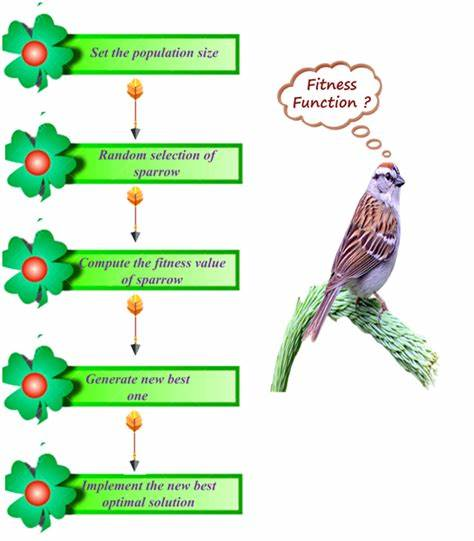
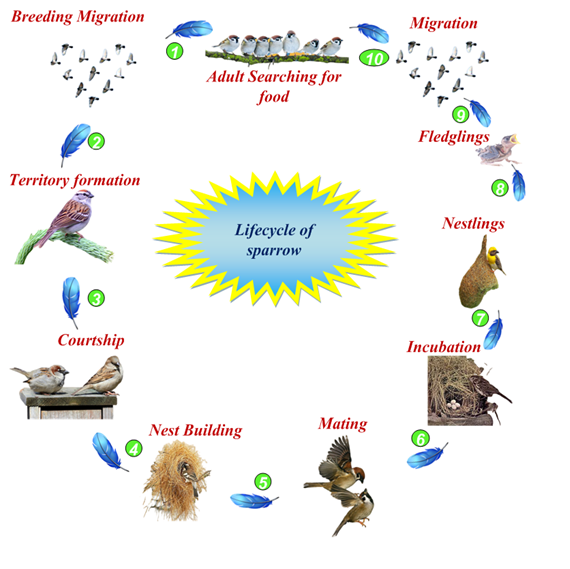


4、完整代码和步骤
此代码的依赖环境如下:
tensorflow==2.5.0
numpy==1.19.5
keras==2.6.0
matplotlib==3.5.2
麻雀算法用随机数据跑起来的代码:
# -*- coding: utf-8 -*-
import numpy as np
import random
import matplotlib.pyplot as plt
def fun(x):
a = np.sum(x ** 2)
return a
def Bounds(x, lb, ub):
temp = x.reshape(-1, 2)
I = temp < lb
temp[I] = lb[I]
J = temp > ub
temp[J] = ub[J]
return temp
def SSA(M, pop, dim, P_percent, c, d):
# M 迭代次数 SSA(1000, 20, 2, 0.2, -10, 10)
# pop 麻雀种群数量
# dim 寻优维度
# P_percent 麻雀在生产者的比例
# c d分别是寻优范围的最小值与最大值
pNum = round(pop * P_percent) # pNum是生产者
lb = c * np.ones((1, dim)) # 下边界
ub = d * np.ones((1, dim)) # 上边界
x = np.zeros((pop, dim))
fit = np.zeros((pop, 1))
# 种群初始化
for i in range(pop):
x[i, :] = lb + (ub - lb) * np.random.rand(1, dim)
fit[i] = fun(x[i, :])
pFit = fit.copy()
pX = x.copy()
fMin = np.min(fit)
bestI = np.argmin(fit)
bestX = x[bestI, :].copy()
Convergence_curve = np.zeros((M,))
trace = np.zeros((M, dim))
for t in range(M):
sortIndex = np.argsort(pFit.reshape(-1, )).reshape(-1, )
fmax = np.max(pFit)
B = np.argmax(pFit)
worse = x[B, :].copy()
r2 = np.random.rand()
## 这一部分为发现者(探索者)的位置更新
if r2 < 0.8: # %预警值较小,说明没有捕食者出现
for i in range(pNum): # r2小于0.8时发现者改变位置
r1 = np.random.rand()
x[sortIndex[i], :] = pX[sortIndex[i], :] * np.exp(-i / (r1 * M))
x[sortIndex[i], :] = Bounds(x[sortIndex[i], :], lb, ub)
temp = fun(x[sortIndex[i], :])
fit[sortIndex[i]] = temp # 计算新的适应度值
else: # 预警值较大,说明有捕食者出现威胁到了种群的安全,需要去其它地方觅食
for i in range(pNum): # r2大于0.8时发现者改变位置
r1 = np.random.rand()
x[sortIndex[i], :] = pX[sortIndex[i], :] + np.random.normal() * np.ones((1, dim))
x[sortIndex[i], :] = Bounds(x[sortIndex[i], :], lb, ub)
fit[sortIndex[i]] = fun(x[sortIndex[i], :]) # 计算新的适应度值
bestII = np.argmin(fit)
bestXX = x[bestII, :].copy()
##这一部分为加入者(追随者)的位置更新
for i in range(pNum + 1, pop): # 剩下的个体变化
A = np.floor(np.random.rand(1, dim) * 2) * 2 - 1
if i > pop / 2: # 这个代表这部分麻雀处于十分饥饿的状态(因为它们的能量很低,也是是适应度值很差),需要到其它地方觅食
x[sortIndex[i], :] = np.random.normal() * np.exp((worse - pX[sortIndex[i], :]) / (i ** 2))
else: # 这一部分追随者是围绕最好的发现者周围进行觅食,其间也有可能发生食物的争夺,使其自己变成生产者
x[sortIndex[i], :] = bestXX + np.abs(pX[sortIndex[i], :] - bestXX).dot(
A.T * (A * A.T) ** (-1)) * np.ones((1, dim))
x[sortIndex[i], :] = Bounds(x[sortIndex[i], :], lb, ub) # 判断边界是否超出
fit[sortIndex[i]] = fun(x[sortIndex[i], :]) # 计算适应度值
# 这一部分为意识到危险(注意这里只是意识到了危险,不代表出现了真正的捕食者)的麻雀的位置更新
c = random.sample(range(sortIndex.shape[0]),
sortIndex.shape[0]) # 这个的作用是在种群中随机产生其位置(也就是这部分的麻雀位置一开始是随机的,意识到危险了要进行位置移动,
b = sortIndex[np.array(c)[0:round(pop * 0.2)]].reshape(-1, )
for j in range(b.shape[0]):
if pFit[sortIndex[b[j]]] > fMin: # 处于种群外围的麻雀的位置改变
x[sortIndex[b[j]], :] = bestX + np.random.normal(1, dim) * (np.abs(pX[sortIndex[b[j]], :] - bestX))
else: # 处于种群中心的麻雀的位置改变
x[sortIndex[b[j]], :] = pX[sortIndex[b[j]], :] + (2 * np.random.rand() - 1) * (
np.abs(pX[sortIndex[b[j]], :] - worse)) / (pFit[sortIndex[b[j]]] - fmax + 1e-50)
x[sortIndex[b[j]], :] = Bounds(x[sortIndex[b[j]], :], lb, ub)
fit[sortIndex[b[j]]] = fun(x[sortIndex[b[j]], :]) # 计算适应度值
# 这部分是最终的最优解更新
for i in range(pop):
if fit[i] < pFit[i]:
pFit[i] = fit[i].copy()
pX[i, :] = x[i, :].copy()
if pFit[i] < fMin:
fMin = pFit[i, 0].copy()
bestX = pX[i, :].copy()
trace[t, :] = bestX
Convergence_curve[t] = fMin
return bestX, fMin, Convergence_curve, trace
# In[]
bestX, fMin, Convergence_curve, trace = SSA(1000, 20, 2, 0.2, -10, 10)
plt.figure()
plt.plot(Convergence_curve)
plt.show()
代码输出如下:
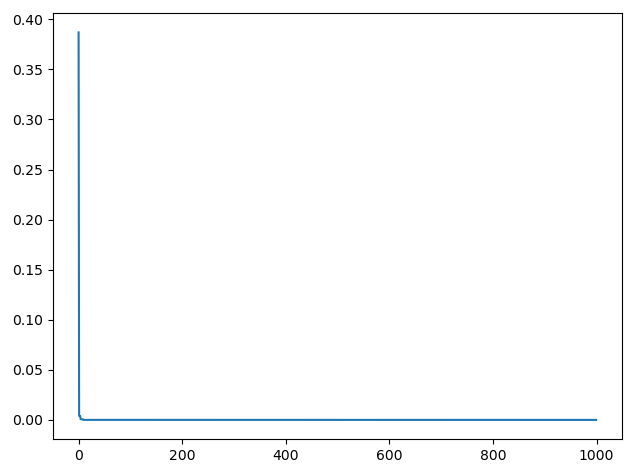
lstm分类算法实现:
import os
import matplotlib.pyplot as plt
import pandas as pd
from tensorflow.python.keras import Sequential
from tensorflow.python.keras.layers import Dense, CuDNNLSTM
from tensorflow.python.keras.layers import Dropout
from tensorflow.python.keras.models import Sequential
from numpy.random import seed
seed(7)
os.chdir(r'C:\Projects\old\判断异常是否发生')
train_path = 'data.csv'
# train_path = '15.xlsx'
usecols = [2, 3, 4, 5, 6, 7, 8, 9, 10, 11, 12, 13, 14]
df = pd.read_csv(train_path, usecols=usecols)
df['ae'] = df['ae'].map(lambda x: 1 if x >= 1 else 0)
df.fillna(0, inplace=True)
train_size = int(len(df) * 0.9)
train = df.iloc[:train_size, :]
test = df.iloc[train_size:, :]
X_train = train.loc[:, train.columns != 'ae'].values # converts the df to a numpy array
y_train = train['ae'].values
X_train = X_train.astype(float)
X_train = X_train.reshape((X_train.shape[0], X_train.shape[1], 1))
print(X_train.shape, y_train.shape)
X_test = test.loc[:, test.columns != 'ae'].values # converts the df to a numpy array
y_test = test['ae'].values
X_test = X_test.reshape((X_test.shape[0], X_test.shape[1], 1))
X_test = X_test.astype(float)
print(X_test.shape, X_test.shape)
def create_model(input_length):
model = Sequential()
model.add(CuDNNLSTM(units=50, return_sequences=True, input_shape=(input_length, 1)))
model.add(Dropout(0.2))
model.add(CuDNNLSTM(units=50, return_sequences=False))
model.add(Dropout(0.2))
model.add(Dense(1, activation='sigmoid'))
model.compile(loss='binary_crossentropy', optimizer='adam', metrics=['accuracy'])
model.summary()
return model
model = create_model(len(X_train[0]))
hist = model.fit(X_train, y_train, batch_size=64, validation_split=0.2, epochs=2, shuffle=False, verbose=1)
plt.plot(hist.history['accuracy'], label='acc')
plt.plot(hist.history['val_accuracy'], label='val_acc')
plt.legend()
plt.show()
plt.plot(hist.history['loss'], label='loss')
plt.legend()
plt.show()
分类算法效果如下:
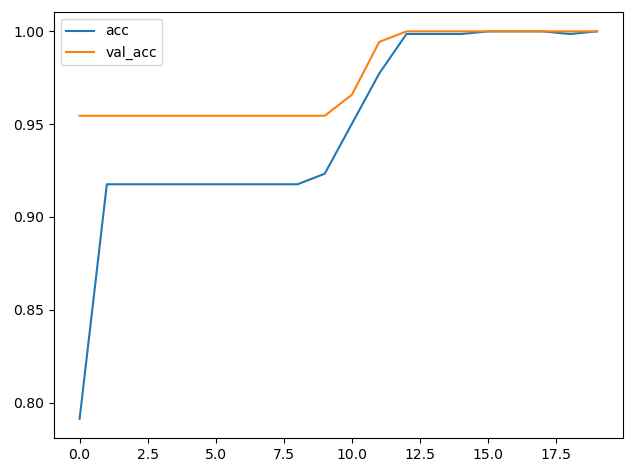
损失图如下:
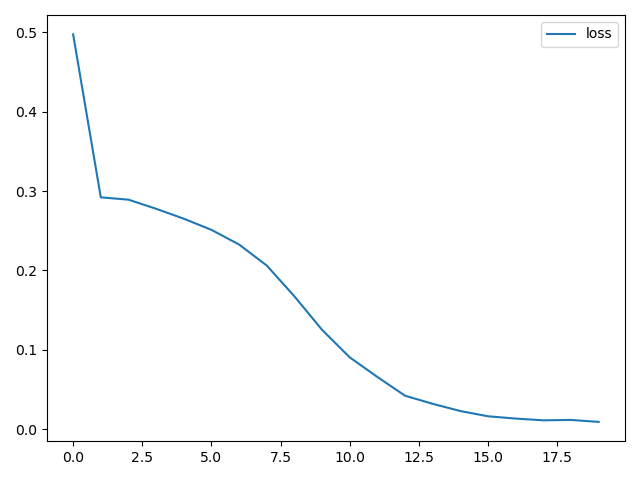
合并麻雀算法和lstm算法,用麻雀算法SSA优化LSTM长短期记忆网络实现分类算法
from random import seed
import matplotlib
import matplotlib.pyplot as plt
import numpy as np
import pandas as pd
from sklearn.metrics import precision_score, recall_score, classification_report
from tensorflow.python.framework.random_seed import set_random_seed
from tensorflow.python.keras.layers import CuDNNLSTM
from tensorflow.python.keras.layers import Dense, Dropout
from tensorflow.python.keras.models import Sequential
# 这两行代码解决 plt 中文显示的问题
plt.rcParams['font.sans-serif'] = ['SimHei']
plt.rcParams['axes.unicode_minus'] = False
matplotlib.rcParams['font.sans-serif'] = ['SimHei'] # 用黑体显示中文
set_random_seed(11)
seed(7)
def pdReadCsv(file, sep):
try:
data = pd.read_csv(file, sep=sep, encoding='utf-8', error_bad_lines=False, engine='python')
return data
except:
data = pd.read_csv(file, sep=sep, encoding='gbk', error_bad_lines=False, engine='python')
return data
class SSA():
def __init__(self, func, n_dim=None, pop_size=20, max_iter=50, lb=-512, ub=512, verbose=False):
self.func = func
self.n_dim = n_dim # dimension of particles, which is the number of variables of func
self.pop = pop_size # number of particles
P_percent = 0.2 # # 生产者的人口规模占总人口规模的20%
D_percent = 0.1 # 预警者的人口规模占总人口规模的10%
self.pNum = round(self.pop * P_percent) # 生产者的人口规模占总人口规模的20%
self.warn = round(self.pop * D_percent) # 预警者的人口规模占总人口规模的10%
self.max_iter = max_iter # max iter
self.verbose = verbose # print the result of each iter or not
self.lb, self.ub = np.array(lb) * np.ones(self.n_dim), np.array(ub) * np.ones(self.n_dim)
assert self.n_dim == len(self.lb) == len(self.ub), 'dim == len(lb) == len(ub) is not True'
assert np.all(self.ub > self.lb), 'upper-bound must be greater than lower-bound'
self.X = np.random.uniform(low=self.lb, high=self.ub, size=(self.pop, self.n_dim))
self.Y = [self.func(self.X[i]) for i in range(len(self.X))] # y = f(x) for all particles
self.pbest_x = self.X.copy() # personal best location of every particle in history
self.pbest_y = [np.inf for i in range(self.pop)] # best image of every particle in history
self.gbest_x = self.pbest_x.mean(axis=0).reshape(1, -1) # global best location for all particles
self.gbest_y = np.inf # global best y for all particles
self.gbest_y_hist = [] # gbest_y of every iteration
self.update_pbest()
self.update_gbest()
#
# record verbose values
self.record_mode = False
self.record_value = {'X': [], 'V': [], 'Y': []}
self.best_x, self.best_y = self.gbest_x, self.gbest_y # history reasons, will be deprecated
self.idx_max = 0
self.x_max = self.X[self.idx_max, :]
self.y_max = self.Y[self.idx_max]
def cal_y(self, start, end):
# calculate y for every x in X
for i in range(start, end):
self.Y[i] = self.func(self.X[i])
# return self.Y
def update_pbest(self):
'''
personal best
'''
for i in range(len(self.Y)):
if self.pbest_y[i] > self.Y[i]:
self.pbest_x[i] = self.X[i]
self.pbest_y[i] = self.Y[i]
def update_gbest(self):
idx_min = self.pbest_y.index(min(self.pbest_y))
if self.gbest_y > self.pbest_y[idx_min]:
self.gbest_x = self.X[idx_min, :].copy()
self.gbest_y = self.pbest_y[idx_min]
def find_worst(self):
self.idx_max = self.Y.index(max(self.Y))
self.x_max = self.X[self.idx_max, :]
self.y_max = self.Y[self.idx_max]
def update_finder(self):
self.idx = sorted(enumerate(self.Y), key=lambda x: x[1])
self.idx = [self.idx[i][0] for i in range(len(self.idx))]
# 这一部位为发现者(探索者)的位置更新
if r2 < 0.8: # 预警值较小,说明没有捕食者出现
for i in range(self.pNum):
r1 = np.random.rand(1)
self.X[self.idx[i], :] = self.X[self.idx[i], :] * np.exp(-(i) / (r1 * self.max_iter)) # 对自变量做一个随机变换
self.X = np.clip(self.X, self.lb, self.ub) # 对超过边界的变量进行去除
# X[idx[i], :] = Bounds(X[idx[i], :], lb, ub) # 对超过边界的变量进行去除
# fit[sortIndex[0, i], 0] = func(X[sortIndex[0, i], :]) # 算新的适应度值
elif r2 >= 0.8: # 预警值较大,说明有捕食者出现威胁到了种群的安全,需要去其它地方觅食
for i in range(self.pNum):
Q = np.random.rand(1) # 也可以替换成 np.random.normal(loc=0, scale=1.0, size=1)
self.X[self.idx[i], :] = self.X[self.idx[i], :] + Q * np.ones(
(1, self.n_dim)) # Q是服从正态分布的随机数。L表示一个1×d的矩阵
self.cal_y(0, self.pNum)
def update_follower(self):
# 这一部位为加入者(追随者)的位置更新
for ii in range(self.pop - self.pNum):
i = ii + self.pNum
A = np.floor(np.random.rand(1, self.n_dim) * 2) * 2 - 1
best_idx = self.Y[0:self.pNum].index(min(self.Y[0:self.pNum]))
bestXX = self.X[best_idx, :]
if i > self.pop / 2:
Q = np.random.rand(1)
self.X[self.idx[i], :] = Q * np.exp((self.x_max - self.X[self.idx[i], :]) / np.square(i))
else:
self.X[self.idx[i], :] = bestXX + np.dot(np.abs(self.X[self.idx[i], :] - bestXX),
1 / (A.T * np.dot(A, A.T))) * np.ones((1, self.n_dim))
self.X = np.clip(self.X, self.lb, self.ub) # 对超过边界的变量进行去除
# X[self.idx[i],:] = Bounds(X[self.idx[i],lb,ub)
# fit[self.idx[i],0] = func(X[self.idx[i], :])
self.cal_y(self.pNum, self.pop)
def detect(self):
arrc = np.arange(self.pop)
c = np.random.permutation(arrc) # 随机排列序列
b = [self.idx[i] for i in c[0: self.warn]]
e = 10e-10
for j in range(len(b)):
if self.Y[b[j]] > self.gbest_y:
self.X[b[j], :] = self.gbest_y + np.random.rand(1, self.n_dim) * np.abs(self.X[b[j], :] - self.gbest_y)
self.X = np.clip(self.X, self.lb, self.ub) # 对超过边界的变量进行去除
self.Y[b[j]] = self.func(self.X[b[j]])
def run(self, max_iter=None):
self.max_iter = max_iter or self.max_iter
for iter_num in range(self.max_iter):
self.update_finder() # 更新发现者位置
self.find_worst() # 取出最大的适应度值和最差适应度的X
self.update_follower() # 更新跟随着位置
self.update_pbest()
self.update_gbest()
self.detect()
self.update_pbest()
self.update_gbest()
self.gbest_y_hist.append(self.gbest_y)
return self.best_x, self.best_y
import os
os.chdir(r'C:\Projects\old\判断异常是否发生')
train_path = 'data.csv'
# train_path = '15.xlsx'
usecols = [2, 3, 4, 5, 6, 7, 8, 9, 10, 11, 12, 13, 14]
df = pd.read_csv(train_path, usecols=usecols)
df['ae'] = df['ae'].map(lambda x: 1 if x >= 1 else 0)
df.fillna(0, inplace=True)
train_size = int(len(df) * 0.9)
train = df.iloc[:train_size, :]
test = df.iloc[train_size:, :]
X_train = train.loc[:, train.columns != 'ae'].values # converts the df to a numpy array
y_train = train['ae'].values
X_train = X_train.astype(float)
X_train = X_train.reshape((X_train.shape[0], X_train.shape[1], 1))
print(X_train.shape, y_train.shape)
X_test = test.loc[:, test.columns != 'ae'].values # converts the df to a numpy array
y_test = test['ae'].values
X_test = X_test.astype(float)
X_test = X_test.reshape((X_test.shape[0], X_test.shape[1], 1))
print(X_test.shape, X_test.shape)
precisions = []
recalls = []
accuracys = []
def create_model(units, dropout):
model = Sequential()
model.add(CuDNNLSTM(units=units, return_sequences=True, input_shape=(len(X_train[0]), 1)))
model.add(Dropout(dropout))
model.add(CuDNNLSTM(units=units, return_sequences=False))
model.add(Dropout(dropout))
model.add(Dense(1, activation='sigmoid'))
model.compile(loss='binary_crossentropy', optimizer='adam', metrics=['accuracy'])
return model
def f13(x):
epochs = int(x[0])
units = int(x[1])
dropout = x[2]
batch_size = int(x[3])
model = create_model(units, dropout)
model.fit(X_train, y_train, batch_size=batch_size, validation_split=0.2, epochs=epochs, shuffle=False, verbose=1)
y_pred = model.predict(X_test)
y_pred_int = np.argmax(y_pred, axis=1)
precision = precision_score(y_test, y_pred_int, average='macro')
recall = recall_score(y_test, y_pred_int, average='macro')
print('recall')
print(recall)
recalls.append(recall)
print('precision')
print(precision)
t = classification_report(y_test, y_pred_int, target_names=['0', '1'], output_dict=True)
accuracy = t['accuracy']
print('accuracy')
print(accuracy)
accuracys.append(accuracy)
precisions.append(precision)
return 1 - precision
'''根据WIFI数据和成绩数据使用麻雀算法加lgb做一个挂科预测
pr曲线,roc曲线和auc值
'''
if __name__ == '__main__':
# 用于优化的四个参数范围 epochs units dropout batch_size
up_params = [8, 55, 0.55, 55]
low_params = [1, 5, 0.05, 5]
# 开始优化
ssa = SSA(f13, n_dim=4, pop_size=10, max_iter=2, lb=low_params, ub=up_params)
ssa.run()
print('best_params is ', ssa.gbest_x)
print('best_precision is', 1 - ssa.gbest_y)
print('best_accuracy is', max(accuracys))
print('best_recall is', max(recalls))
epochs = int(ssa.gbest_x[0])
units = int(ssa.gbest_x[1])
dropout = ssa.gbest_x[2]
batch_size = int(ssa.gbest_x[3])
model = create_model(units, dropout)
model.fit(X_train, y_train, batch_size=batch_size, validation_split=0.2, epochs=epochs, shuffle=False, verbose=1)
y_pred = model.predict(X_test)
y_pred_int = np.argmax(y_pred, axis=1)
precision = precision_score(y_test, y_pred_int, average='macro')
recall = recall_score(y_test, y_pred_int, average='macro')
print('recall')
print(recall)
recalls.append(recall)
print('precision')
print(precision)
t = classification_report(y_test, y_pred_int, target_names=['0', '1'], output_dict=True)
accuracy = t['accuracy']
print('accuracy')
print(accuracy)
输出如下
D:\Program\CONDA\python.exe D:/Program/JacksonProject/SSA/SSA_LSTM_CLASS.py
2023-03-06 22:51:51.834759: I tensorflow/stream_executor/platform/default/dso_loader.cc:49] Successfully opened dynamic library cudart64_110.dll
2023-03-06 22:51:53.071157: I tensorflow/compiler/jit/xla_cpu_device.cc:41] Not creating XLA devices, tf_xla_enable_xla_devices not set
2023-03-06 22:51:53.071890: I tensorflow/stream_executor/platform/default/dso_loader.cc:49] Successfully opened dynamic library nvcuda.dll
(880, 12, 1) (880,)
(98, 12, 1) (98, 12, 1)
2023-03-06 22:51:53.091260: I tensorflow/core/common_runtime/gpu/gpu_device.cc:1720] Found device 0 with properties:
pciBusID: 0000:01:00.0 name: NVIDIA GeForce RTX 3070 computeCapability: 8.6
coreClock: 1.755GHz coreCount: 46 deviceMemorySize: 8.00GiB deviceMemoryBandwidth: 417.29GiB/s
2023-03-06 22:51:53.091462: I tensorflow/stream_executor/platform/default/dso_loader.cc:49] Successfully opened dynamic library cudart64_110.dll
2023-03-06 22:51:53.097473: I tensorflow/stream_executor/platform/default/dso_loader.cc:49] Successfully opened dynamic library cublas64_11.dll
2023-03-06 22:51:53.097585: I tensorflow/stream_executor/platform/default/dso_loader.cc:49] Successfully opened dynamic library cublasLt64_11.dll
2023-03-06 22:51:53.100620: I tensorflow/stream_executor/platform/default/dso_loader.cc:49] Successfully opened dynamic library cufft64_10.dll
2023-03-06 22:51:53.101778: I tensorflow/stream_executor/platform/default/dso_loader.cc:49] Successfully opened dynamic library curand64_10.dll
2023-03-06 22:51:53.109522: I tensorflow/stream_executor/platform/default/dso_loader.cc:49] Successfully opened dynamic library cusolver64_10.dll
2023-03-06 22:51:53.112297: I tensorflow/stream_executor/platform/default/dso_loader.cc:49] Successfully opened dynamic library cusparse64_11.dll
2023-03-06 22:51:53.112870: I tensorflow/stream_executor/platform/default/dso_loader.cc:49] Successfully opened dynamic library cudnn64_8.dll
2023-03-06 22:51:53.112999: I tensorflow/core/common_runtime/gpu/gpu_device.cc:1862] Adding visible gpu devices: 0
2023-03-06 22:51:53.113308: I tensorflow/core/platform/cpu_feature_guard.cc:142] This TensorFlow binary is optimized with oneAPI Deep Neural Network Library (oneDNN) to use the following CPU instructions in performance-critical operations: AVX2
To enable them in other operations, rebuild TensorFlow with the appropriate compiler flags.
2023-03-06 22:51:53.114119: I tensorflow/core/common_runtime/gpu/gpu_device.cc:1720] Found device 0 with properties:
pciBusID: 0000:01:00.0 name: NVIDIA GeForce RTX 3070 computeCapability: 8.6
coreClock: 1.755GHz coreCount: 46 deviceMemorySize: 8.00GiB deviceMemoryBandwidth: 417.29GiB/s
2023-03-06 22:51:53.114374: I tensorflow/stream_executor/platform/default/dso_loader.cc:49] Successfully opened dynamic library cudart64_110.dll
2023-03-06 22:51:53.114483: I tensorflow/stream_executor/platform/default/dso_loader.cc:49] Successfully opened dynamic library cublas64_11.dll
2023-03-06 22:51:53.114591: I tensorflow/stream_executor/platform/default/dso_loader.cc:49] Successfully opened dynamic library cublasLt64_11.dll
2023-03-06 22:51:53.114692: I tensorflow/stream_executor/platform/default/dso_loader.cc:49] Successfully opened dynamic library cufft64_10.dll
2023-03-06 22:51:53.114785: I tensorflow/stream_executor/platform/default/dso_loader.cc:49] Successfully opened dynamic library curand64_10.dll
2023-03-06 22:51:53.114881: I tensorflow/stream_executor/platform/default/dso_loader.cc:49] Successfully opened dynamic library cusolver64_10.dll
2023-03-06 22:51:53.114980: I tensorflow/stream_executor/platform/default/dso_loader.cc:49] Successfully opened dynamic library cusparse64_11.dll
2023-03-06 22:51:53.115076: I tensorflow/stream_executor/platform/default/dso_loader.cc:49] Successfully opened dynamic library cudnn64_8.dll
2023-03-06 22:51:53.115187: I tensorflow/core/common_runtime/gpu/gpu_device.cc:1862] Adding visible gpu devices: 0
2023-03-06 22:51:53.585208: I tensorflow/core/common_runtime/gpu/gpu_device.cc:1261] Device interconnect StreamExecutor with strength 1 edge matrix:
2023-03-06 22:51:53.585330: I tensorflow/core/common_runtime/gpu/gpu_device.cc:1267] 0
2023-03-06 22:51:53.585394: I tensorflow/core/common_runtime/gpu/gpu_device.cc:1280] 0: N
2023-03-06 22:51:53.585616: I tensorflow/core/common_runtime/gpu/gpu_device.cc:1406] Created TensorFlow device (/job:localhost/replica:0/task:0/device:GPU:0 with 6573 MB memory) -> physical GPU (device: 0, name: NVIDIA GeForce RTX 3070, pci bus id: 0000:01:00.0, compute capability: 8.6)
2023-03-06 22:51:53.586592: I tensorflow/compiler/jit/xla_gpu_device.cc:99] Not creating XLA devices, tf_xla_enable_xla_devices not set
2023-03-06 22:51:53.917241: I tensorflow/compiler/mlir/mlir_graph_optimization_pass.cc:116] None of the MLIR optimization passes are enabled (registered 2)
Epoch 1/7
2023-03-06 22:51:54.744603: I tensorflow/stream_executor/platform/default/dso_loader.cc:49] Successfully opened dynamic library cublas64_11.dll
2023-03-06 22:51:55.357995: I tensorflow/stream_executor/platform/default/dso_loader.cc:49] Successfully opened dynamic library cublasLt64_11.dll
2023-03-06 22:51:55.362788: I tensorflow/stream_executor/platform/default/dso_loader.cc:49] Successfully opened dynamic library cudnn64_8.dll
1/40 [..............................] - ETA: 1:33 - loss: 0.7500 - accuracy: 0.33332023-03-06 22:51:56.317708: I tensorflow/stream_executor/cuda/cuda_blas.cc:1838] TensorFloat-32 will be used for the matrix multiplication. This will only be logged once.
40/40 [==============================] - 3s 16ms/step - loss: 0.4230 - accuracy: 0.8329 - val_loss: 0.1822 - val_accuracy: 0.9545
Epoch 2/7
40/40 [==============================] - 0s 7ms/step - loss: 0.3202 - accuracy: 0.9040 - val_loss: 0.1702 - val_accuracy: 0.9545
Epoch 3/7
40/40 [==============================] - 0s 7ms/step - loss: 0.2662 - accuracy: 0.9040 - val_loss: 0.1241 - val_accuracy: 0.9545
Epoch 4/7
40/40 [==============================] - 0s 7ms/step - loss: 0.1704 - accuracy: 0.9089 - val_loss: 0.0482 - val_accuracy: 1.0000
Epoch 5/7
40/40 [==============================] - 0s 7ms/step - loss: 0.0522 - accuracy: 0.9981 - val_loss: 0.0148 - val_accuracy: 1.0000
Epoch 6/7
40/40 [==============================] - 0s 7ms/step - loss: 0.0212 - accuracy: 1.0000 - val_loss: 0.0079 - val_accuracy: 1.0000
Epoch 7/7
40/40 [==============================] - 0s 7ms/step - loss: 0.0123 - accuracy: 1.0000 - val_loss: 0.0048 - val_accuracy: 1.0000
D:\Program\CONDA\lib\site-packages\sklearn\metrics\_classification.py:1268: UndefinedMetricWarning: Precision is ill-defined and being set to 0.0 in labels with no predicted samples. Use `zero_division` parameter to control this behavior.
_warn_prf(average, modifier, msg_start, len(result))
D:\Program\CONDA\lib\site-packages\sklearn\metrics\_classification.py:1268: UndefinedMetricWarning: Precision and F-score are ill-defined and being set to 0.0 in labels with no predicted samples. Use `zero_division` parameter to control this behavior.
_warn_prf(average, modifier, msg_start, len(result))
recall
0.5
precision
0.47959183673469385
accuracy
0.9591836734693877
Epoch 1/6
20/20 [==============================] - 1s 18ms/step - loss: 0.4540 - accuracy: 0.8943 - val_loss: 0.2004 - val_accuracy: 0.9545
Epoch 2/6
20/20 [==============================] - 0s 10ms/step - loss: 0.3300 - accuracy: 0.9040 - val_loss: 0.1801 - val_accuracy: 0.9545
Epoch 3/6
20/20 [==============================] - 0s 10ms/step - loss: 0.2932 - accuracy: 0.9040 - val_loss: 0.1763 - val_accuracy: 0.9545
Epoch 4/6
20/20 [==============================] - 0s 9ms/step - loss: 0.2894 - accuracy: 0.9040 - val_loss: 0.1689 - val_accuracy: 0.9545
Epoch 5/6
20/20 [==============================] - 0s 9ms/step - loss: 0.2875 - accuracy: 0.9040 - val_loss: 0.1584 - val_accuracy: 0.9545
Epoch 6/6
20/20 [==============================] - 0s 10ms/step - loss: 0.2486 - accuracy: 0.9040 - val_loss: 0.1403 - val_accuracy: 0.9545
recall
0.5
precision
0.47959183673469385
accuracy
0.9591836734693877
Epoch 1/6
18/18 [==============================] - 1s 22ms/step - loss: 0.4610 - accuracy: 0.8135 - val_loss: 0.1842 - val_accuracy: 0.9545
Epoch 2/6
18/18 [==============================] - 0s 10ms/step - loss: 0.3438 - accuracy: 0.9025 - val_loss: 0.1815 - val_accuracy: 0.9545
Epoch 3/6
18/18 [==============================] - 0s 10ms/step - loss: 0.3157 - accuracy: 0.9025 - val_loss: 0.1755 - val_accuracy: 0.9545
Epoch 4/6
18/18 [==============================] - 0s 8ms/step - loss: 0.3025 - accuracy: 0.9025 - val_loss: 0.1599 - val_accuracy: 0.9545
Epoch 5/6
18/18 [==============================] - 0s 8ms/step - loss: 0.2707 - accuracy: 0.9025 - val_loss: 0.1373 - val_accuracy: 0.9545
Epoch 6/6
18/18 [==============================] - 0s 9ms/step - loss: 0.2300 - accuracy: 0.9025 - val_loss: 0.1047 - val_accuracy: 0.9545
recall
0.5
precision
0.47959183673469385
accuracy
0.9591836734693877
Epoch 1/5
完整代码和数据链接






